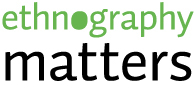Reaching Those Beyond Big Data
 Editor’s Note: Opening up the Stories to Action edition is Panthea Lee’s @panthealee moving story about a human trafficking outreach campaign that her company, Reboot, designed for Safe Horizon. In David Brook’s recent NYT column, What Data Can’t Do, he lists several things that big data is unable to accomplish. After reading the notes to Panthea’s talk below, we’d all agree that big data also leaves out people who live”off the grid.”
Editor’s Note: Opening up the Stories to Action edition is Panthea Lee’s @panthealee moving story about a human trafficking outreach campaign that her company, Reboot, designed for Safe Horizon. In David Brook’s recent NYT column, What Data Can’t Do, he lists several things that big data is unable to accomplish. After reading the notes to Panthea’s talk below, we’d all agree that big data also leaves out people who live”off the grid.”
As Panthea tells her story about Fatou (pseudonym), a person who has been trafficked, we learn that many of the services we use to make our lives easier, like Google Maps or Hop Stop, are also used by human traffickers to maintain dominance and power over people they are controlling. Panthea shares the early prototypes in Reboot’s design and how they decided to create a campaign that would take place at cash checking shops.
Below, Panthea shares her notes to the talk that she gave at Microsoft’s annual Social Computing Symposium organized by Lily Cheng at NYU’s ITP. You can also view the video version of her talk.
________________________________________________________________
We’ve made great strides in data-driven policymaking, open government, and civic technology –– many of the folks in this room have made significant contributions in these domains. But, as we know, many people, even here in New York City, still live “off the grid”––and the issues of access go beyond “digital divide”.
As a designer working on governance and development issues––fields where economists regularly eat anthropologists for lunch––this is something I think a lot about.
In the era of Big Data, as we become increasingly reliant on capital-d Data, I wonder what might exist in the negative space? Who are we not capturing in our datasets? And how might we reach them?
A few months ago, I met a young woman from Benin who I will call Fatou (not her real name). Fatou had been adopted by an American preacher on mission in Benin, and brought to the United States. She and her family were overjoyed at her good fortune.
Fatou was pleased, she felt taken care of with her new “mother” and “father” in Queens. They started her on English lessons to help her adjust to the US and to allow her to enroll in school, a longtime dream.
But even from the outset, some things seemed strange to her.
Whenever they left the house, “to keep her safe”, her mother always held her by the wrist, keeping a firm grip. She wasn’t allowed any possessions beyond clothing. Her belongings were regularly searched for any material she kept, particularly information (pamphlets, papers). If found, they were confiscated. She worked long hours at a school the family owned. She was never herself enrolled in school, as promised, and when she inquired about her education, she was told to stop being ungrateful.
At first, Fatou thought these were just US customs. But then things got worse. Read More…



 his month’s
his month’s 









Recent Comments